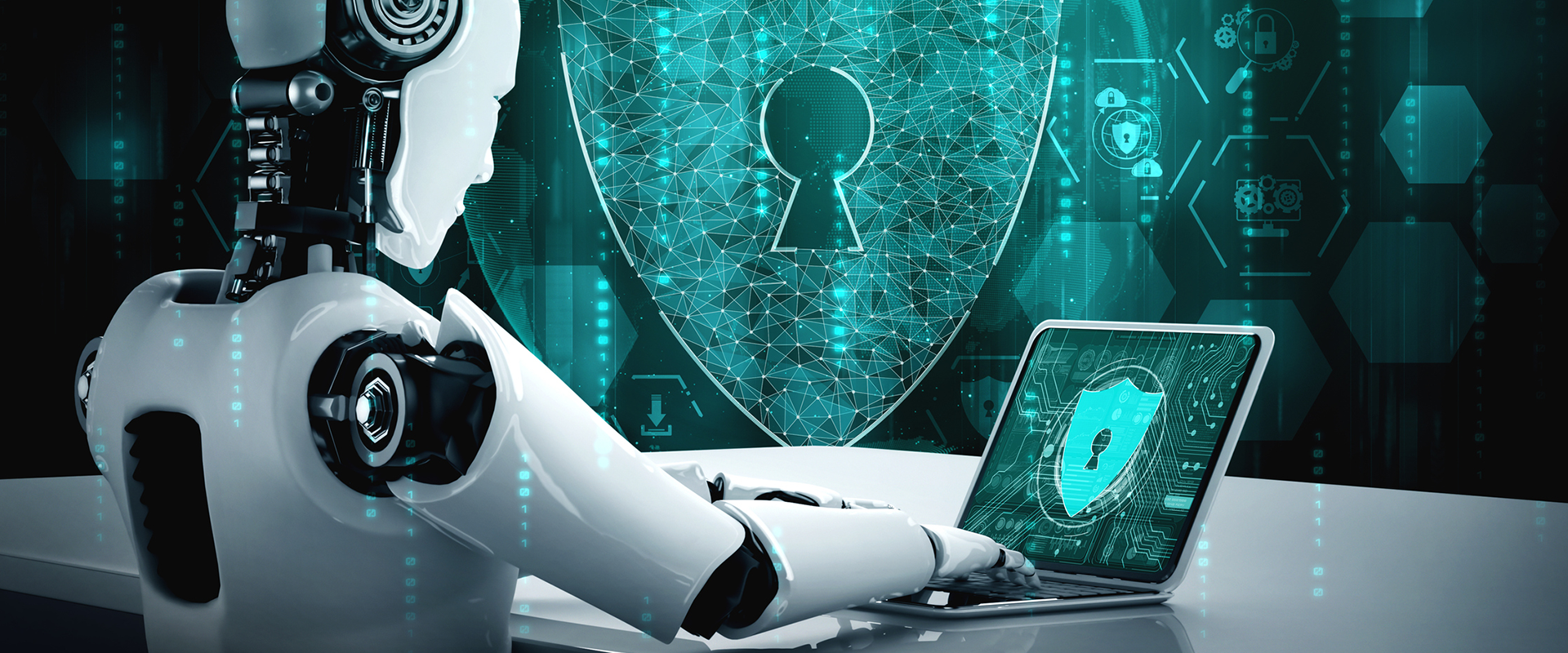As the world becomes increasingly digitized, the need for robust cybersecurity measures has never been more critical. Cyber threats and attacks are evolving at an alarming rate, requiring innovative solutions to stay one step ahead. Artificial Intelligence (AI) is emerging as a powerful tool in the realm of cybersecurity, revolutionizing the way we detect, prevent, and respond to cyber threats. In this article, we will explore the intersection of artificial intelligence and cybersecurity, highlighting the potential benefits and challenges it presents.
Enhanced Threat Detection: Traditional cybersecurity systems often struggle to keep pace with rapidly evolving cyber threats. AI-powered solutions, however, can analyze vast amounts of data in real-time, identifying patterns and anomalies that may indicate malicious activities. Machine learning algorithms can continuously learn from new data, enabling systems to adapt and improve their threat detection capabilities. By leveraging AI, organizations can proactively detect and mitigate threats before they cause significant damage.
Advanced Behavioral Analysis: AI enables cybersecurity systems to employ advanced behavioral analysis techniques. By learning normal patterns of user behavior and network activity, AI algorithms can detect deviations that may indicate unauthorized access or malicious intent. This approach helps identify insider threats, zero-day attacks, and sophisticated hacking techniques that may go undetected by traditional security measures. AI-driven behavioral analysis provides a proactive defense against emerging and complex cyber threats.
Rapid Incident Response: In the event of a cyber attack, every second counts. AI can automate and expedite incident response processes, significantly reducing response times. AI-powered systems can detect and triage security incidents, prioritize threats based on their severity, and even autonomously respond to certain types of attacks. By leveraging AI in incident response, organizations can minimize the impact of cyber attacks, contain breaches, and swiftly restore normal operations.
Intelligent Malware Detection: Malware continues to pose a significant threat to organizations and individuals. AI can play a crucial role in detecting and mitigating malware attacks. Machine learning algorithms can analyze the characteristics of known malware and identify emerging malware variants based on their behavioral patterns. This ability to detect previously unseen malware is invaluable in countering evolving cyber threats and protecting against zero-day attacks.
Vulnerability Management: Identifying and patching vulnerabilities in software and systems is a critical aspect of cybersecurity. AI can assist in automating vulnerability management processes. By analyzing large volumes of data and employing predictive analytics, AI can identify potential vulnerabilities, prioritize them based on their risk level, and recommend appropriate remediation actions. This helps organizations proactively address vulnerabilities, reducing the window of opportunity for attackers.
Challenges and Ethical Considerations: While AI offers significant benefits in cybersecurity, it also comes with challenges and ethical considerations. AI systems are not immune to attacks and can be vulnerable to adversarial manipulation. Moreover, the ethical implications of using AI in cybersecurity, such as privacy concerns and potential biases in decision-making algorithms, must be carefully addressed to ensure transparency, accountability, and fairness.
Threat Detection and Prevention: Artificial intelligence enhances cybersecurity by analyzing vast amounts of data in real-time, identifying patterns, and detecting anomalies that may indicate malicious activities. It improves threat detection capabilities and enables proactive prevention of cyber attacks.
Behavioral Analysis: AI-driven cybersecurity systems employ advanced behavioral analysis techniques to detect deviations from normal patterns of user behavior and network activity. This approach helps identify insider threats, zero-day attacks, and sophisticated hacking techniques that may go undetected by traditional security measures.
Incident Response Automation: AI expedites incident response processes by automating tasks such as detection, triaging, and response to security incidents. It reduces response times and minimizes the impact of cyber attacks, allowing organizations to swiftly contain breaches and restore normal operations.
Intelligent Malware Detection: AI aids in the detection and mitigation of malware attacks by analyzing the characteristics of known malware and identifying emerging malware variants based on their behavioral patterns. This capability is crucial in countering evolving cyber threats and protecting against zero-day attacks.
Vulnerability Management: Artificial intelligence assists in automating vulnerability management processes by analyzing data and employing predictive analytics. It identifies potential vulnerabilities, prioritizes them based on risk level, and recommends remediation actions, enabling organizations to proactively address vulnerabilities and reduce the window of opportunity for attackers.
Adversarial Manipulation and Ethical Considerations: AI systems can be vulnerable to adversarial attacks and manipulations, where attackers exploit weaknesses in AI algorithms. Ethical considerations such as privacy concerns, biases in decision-making algorithms, and transparency in AI implementations need to be addressed to ensure accountability and fairness.
Augmenting Human Expertise: AI complements human expertise in cybersecurity by handling repetitive and time-consuming tasks, allowing security professionals to focus on higher-level analysis and strategic decision-making. It empowers cybersecurity teams to leverage AI's capabilities and expertise in their defense strategies.
Continuous Learning and Adaptability: Machine learning algorithms in AI-powered cybersecurity systems continuously learn from new data, adapting and improving their threat detection and prevention capabilities over time. This ability to evolve and stay updated with emerging threats is essential in combating the ever-changing cyber landscape.
Collaboration and Information Sharing: AI can facilitate collaboration and information sharing among organizations and security communities. By analyzing aggregated data from multiple sources, AI can identify global trends, patterns, and attack vectors, enabling proactive measures and collective defense against cyber threats.
Hybrid Approaches: Combining AI with human intelligence and expertise can yield more robust cybersecurity strategies. Human analysts provide contextual understanding and critical thinking, while AI algorithms offer speed, scalability, and data-driven insights. A hybrid approach leverages the strengths of both to strengthen cyber defenses.
Conclusion: Artificial Intelligence is transforming the landscape of cybersecurity, empowering organizations to combat ever-evolving cyber threats with greater efficiency and precision. From advanced threat detection and behavioral analysis to rapid incident response and intelligent malware detection, AI is reshaping the way we protect our digital assets. As AI continues to evolve, it is crucial to address the challenges and ethical considerations associated with its implementation in cybersecurity, ensuring that it remains a force for good in safeguarding our digital world.


Post a Comment